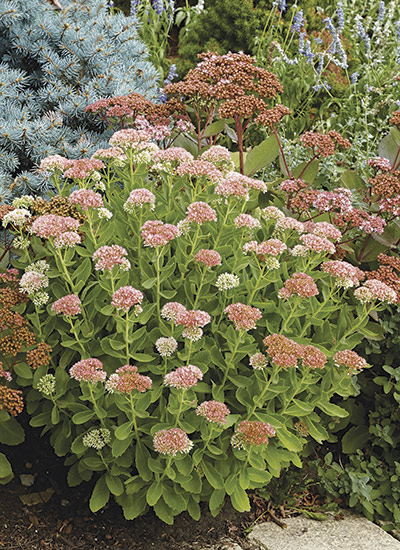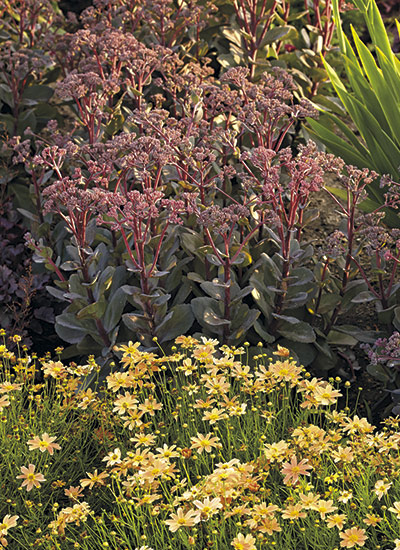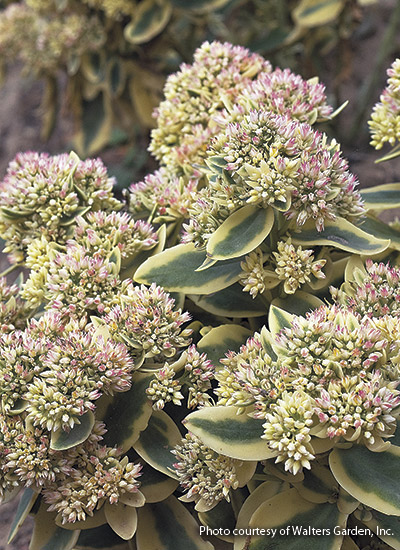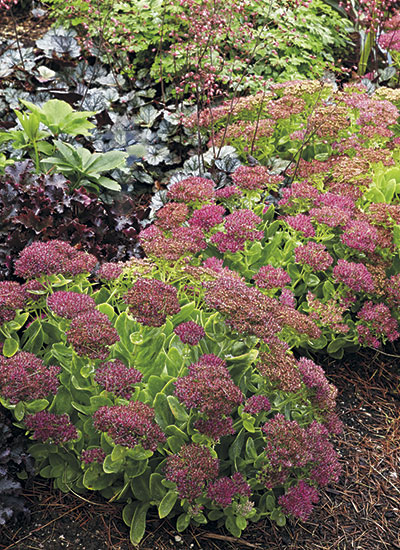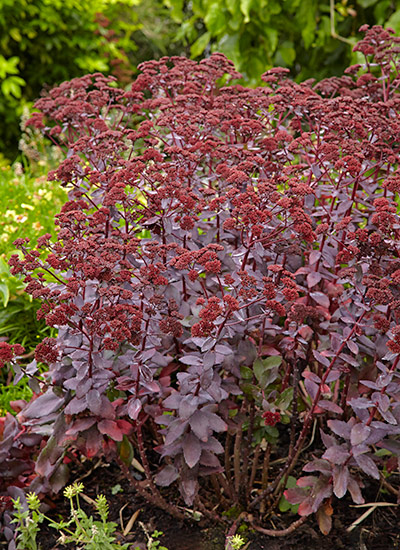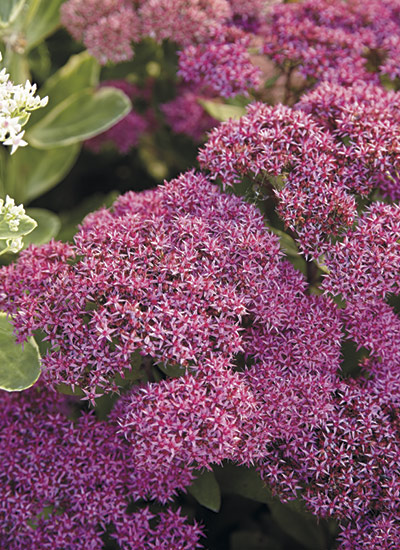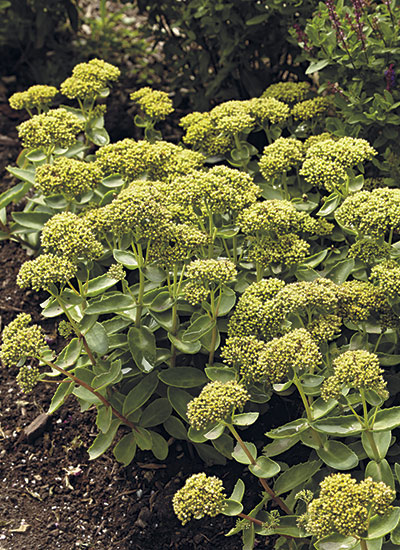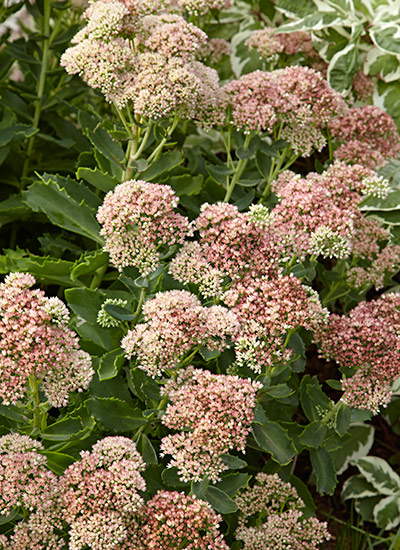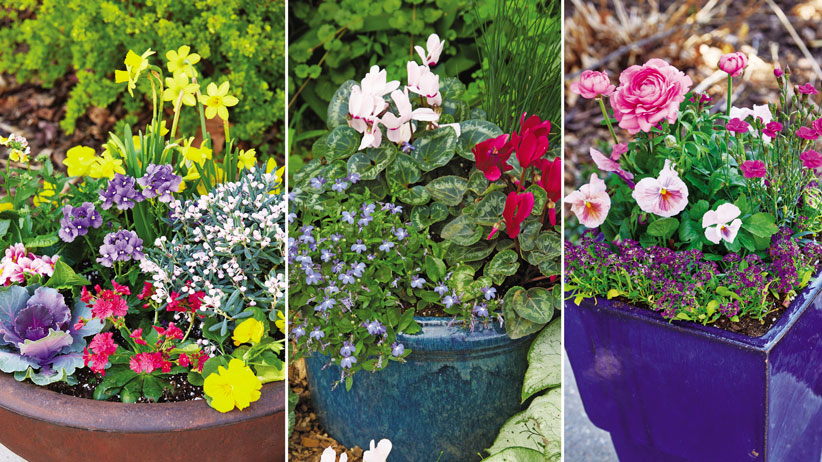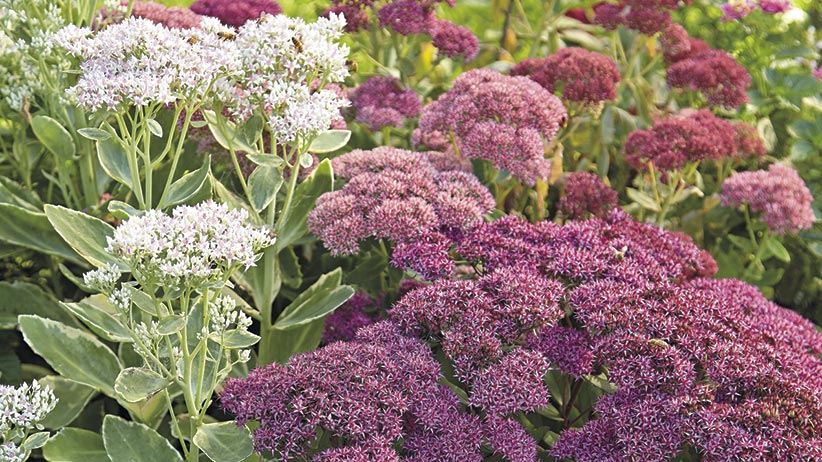
Tall sedum is a low-maintenance garden staple
There aren’t many perennials as hard-working as tall sedum. Plant a few and you’ll discover what great performers they are in spring, summer, fall and even winter without much maintenance. The succulent-like foliage of tall sedum (Hylotylephium spp and hybrids) can be green, chartreuse, variegated, or shades of burgundy, topped with pink, burgundy, white or chartreuse-yellow blooms that often age to shades of russet reds and browns — pretty in all seasons!
Let’s take a look at the seasonal interest tall sedum can provide, then scroll down to the gallery to learn about some additional tall sedum cultivars you may want to audition in your own garden.
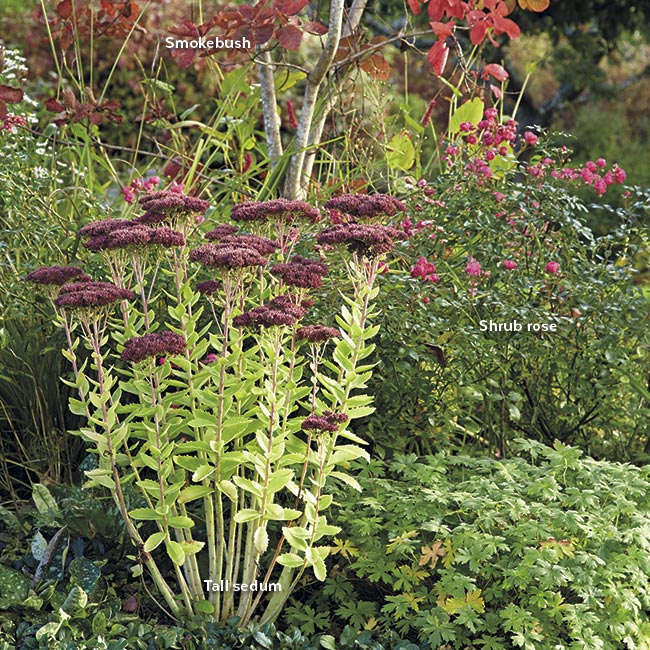
Late-season interest
Late summer to fall brings out tall sedum’s flat-topped flowers that are the perfect landing pad for hungry bees and butterflies. The specimen in the photo above gets top billing in this unforgettable autumn vignette along with smokebush (Cotinus hybrid) and shrub rose (Rosa hybrid). Its late-season foliage looks almost luminescent in the fall light. Dark russet-red flowers stand out better with the lighter green foliage supporting them. Too much dark green and they’d be lost. As fall turns to winter the foliage drops, but the stems stay standing until the following spring even with a layer of snow.
You Might Also Like:
Best Flowers for Butterflies
How to Grow Mums
How to Design with Goldenrod
Winter Flowers for Every Region
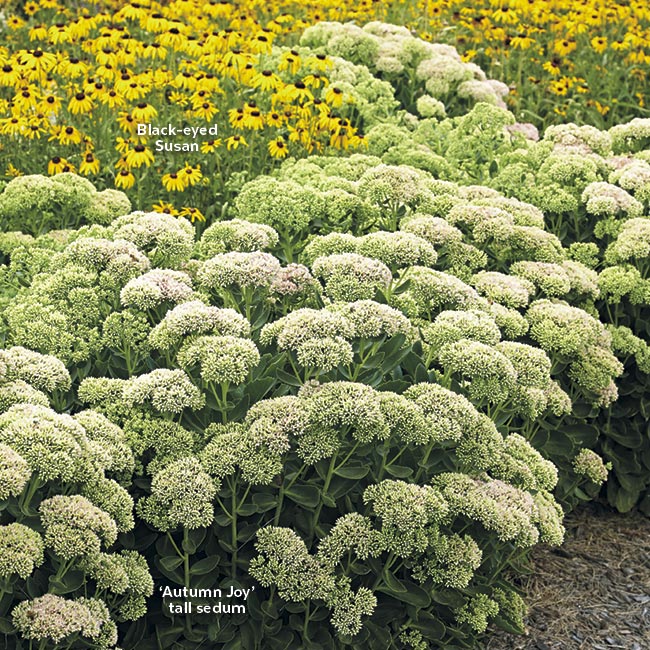
Summer interest
Summer is when tall sedum flowers get started. The ‘Autumn Joy’ (‘Herbstfreude’) in the photo above has green buds just starting to flush rosy pink and will later age to coppery red. Green flower buds may not sound exciting, but that quiet color allows the yellow black-eyed Susan (Rudbeckia fulgida) nearby to take center stage.
You Might Also Like:
Unique Daylilies
Flowers That Will Attract Butterflies
Summer Flowers That Can Take the Heat
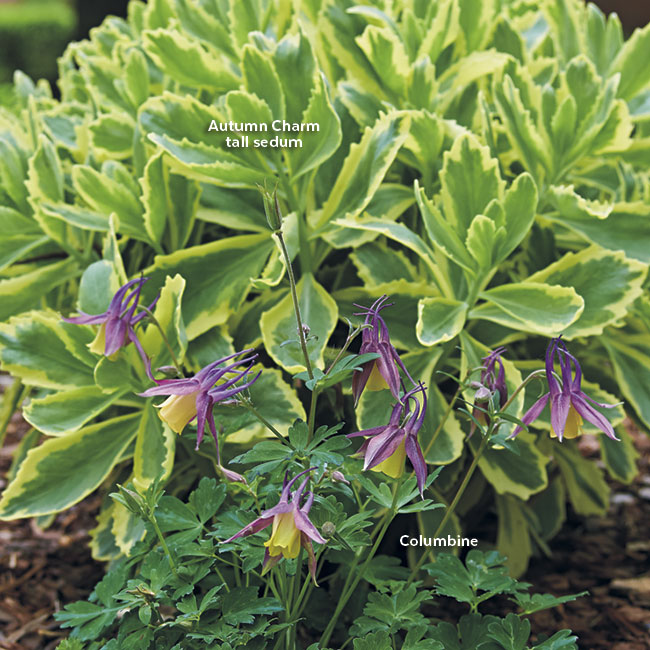
Spring interest
Spring seems like an unusual time for tall sedum, but new stems have a charming rosettelike form that’s a nice companion for early spring bloomers. Variegated Autumn Charm™ (‘Lajos’) in the photo above is a little further along. Its creamy-edged foliage echoes the pale yellow of this petite columbine (Aquilegia hybrid).
You Might Also Like:
6 Ways to Create a Beautiful Spring Garden
Companion Plants for Spring Bulbs
A Simple Solution for Hiding Bulb Foliage
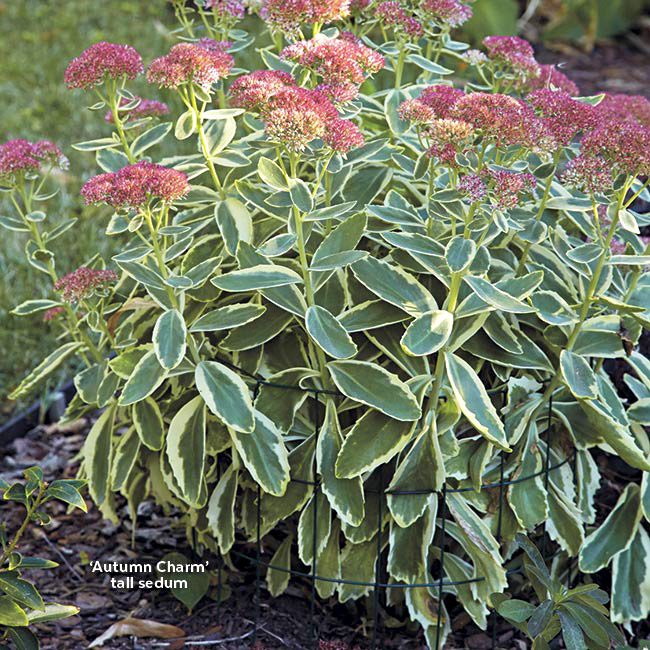
How to grow tall sedum
It’s not hard to care for tall sedum. In fact, sometimes you’ll see one growing happily in a neglected garden without any help. But with a little care tall sedum can go from surviving to thriving. Let’s start with some basics.
Ideal growing conditions for tall sedum
Cold hardy in USDA zones 3 to 10, tall sedum grows best in full sun — six hours or more — especially the dark-foliaged cultivars. The more sun these types have, the darker their leaf color. Without it, they look green-purple. There are a few cultivars like 'Autumn Charm' that can tolerate light shade.
Well-drained soil works best for tall sedum. They’re flexible about soil pH, but if it’s on the alkaline side, even better. No need for much fertilizer, either. An annual side-dressing of compost is usually plenty.
Tall sedum is drought-tolerant, too!
Tall sedum is so drought tolerant you don’t have to worry about watering. In fact, too much water causes them to rot. They’re a great choice for those places far from the spigot. If you use organic mulch in your beds, keep it pulled away from the crown 3 to 4 inches to avoid moisture buildup that causes rot. Pea gravel and stone mulch are good alternatives.
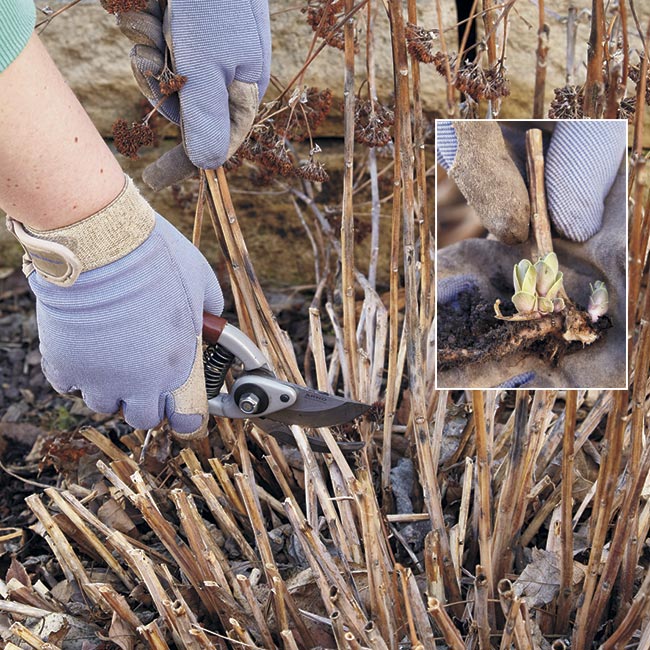
How to clean up tall sedum in spring
Start the growing season off right by cutting back the dead tall sedum stems in early spring, as in the photo above. It’s not critical to cut them any certain height, but keeping stems as short as possible lets you appreciate the new spring growth when it starts.
If a stem comes off with a few leaves attached like you see in the inset photo above, plant or pot it right away and you’ll have a new addition to the garden.
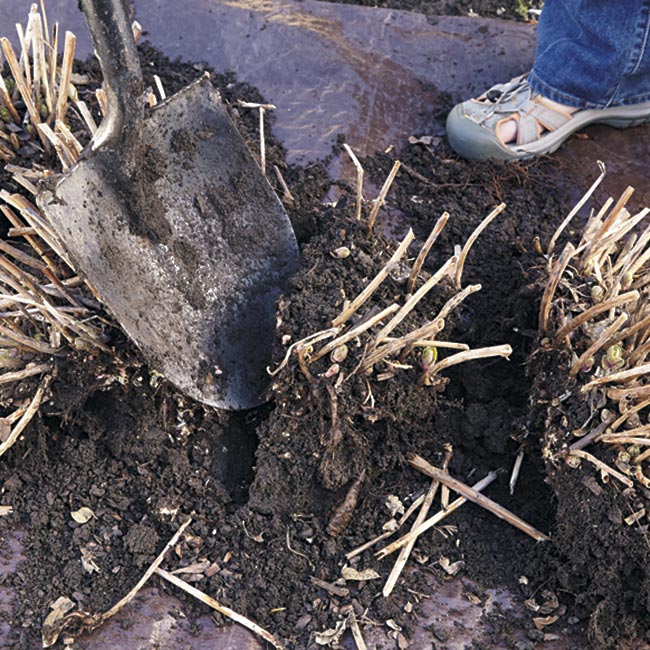
Divide tall sedum in spring
Spring is also the time for dividing tall sedum. It’s easier to do at this time of year — you don’t have to worry about breaking off stems or leaves. Use a shovel to dig around the plant and lift the dense rootball out of the ground. Then, split plants with a shovel or soil knife, and cut the rootball into whatever size division suits your needs. After dividing, simply replant tall sedum divisions at the same depth they were growing before division.
You Might Also Like:
3 Ways to Divide Plants
Don't Divide These Perennials
How to Divide 45 Favorite Perennials

Keep tall sedum upright
As temperatures warm, tall sedum takes off, getting taller and forming flowers. Tall sedum will grow 9 to 36 in. tall, 12 to 24 in. wide, depending on the variety. Unfortunately, some cultivars — ‘Matrona’ is notorious for this — flop open. What’s the solution to splayed sedum? Stake or cut plants back. Both are done in spring.
Cut back tall sedum to prevent flopping
Another way to prevent flopping is to cut tall sedum stems back by up to half any time from spring to early summer. Flowers will be smaller, more numerous and later. I cut the ‘Matrona’ in the photo above back by a third with a pair of pruners, but scissors would work, too. Try to cut back stems at a leaf joint. Two new stems form that will flower later.
Products for Staking You Might Like:
Garden Fencing
Plant Support Hoop
Peony Cage
Find a tall sedum for your garden
Use these tips to help your tall sedum give you encore performances season after season. With all the variety in tall sedums available, you might think there would be different care requirements. Fortunately, that’s not the case. They all do well with the same simple care. Check out the gallery below to meet a few more tall sedums great for dressing up your borders all year.



